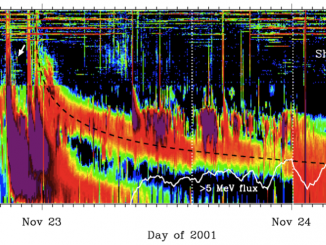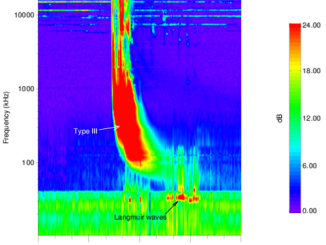Propagation and Interaction Properties of Successive Coronal Mass Ejections in Relation to a Complex Type II Radio Burst
by Y. D. Liu et al.*
Quantifying how coronal mass ejections (CMEs), particularly fast ones, propagate from the Sun to the Earth is an overarching issue in CME research and space weather forecasting. A typical fast CME would finish its major deceleration well before reaching 1 AU (Liu et al. 2013). The actual situation of CME Sun-to-Earth propagation, however, may involve interactions with the highly structured solar wind including other CMEs. Interactions involving more than two […]


